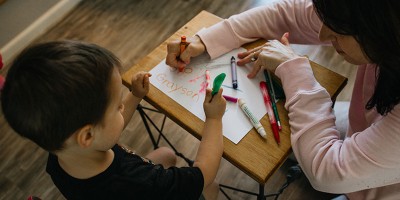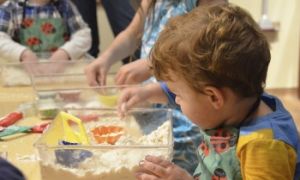The Early Years Learning Framework outlines Intentional Teaching as one of the major practice guidelines to promote children’s learning. Intentional teaching involves actively planning and acting with specific goals or outcomes for children’s learning in mind. The following provides information on Intentional Teaching Definition, Intentional Teaching Strategies, Intentional Teaching Examples and Benefits Of Intentional Teaching.
Intentional Teaching Definition
When educators practice intentional teaching, they actively promote children’s learning through worthwhile and challenging experiences and interactions that foster high-level thinking skills. Intentional teaching means educators have clear learning goals for the children. Though they may adopt a variety of pedagogical strategies, they have clarity in what learning they are aiming for and how children can achieve eylf outcomes. This in turn enables them to be intentional in their strategies to support or scaffold children towards those learning outcomes.
Intentional Teaching Strategies
The defining characteristic of intentional teaching is the deliberate planning of teaching and knowledge-building opportunities. This intentional approach is evident in the way teachers:
- model or demonstrate skills or provide specific instructions
- organise the childcare physical environment including ensuring access to appropriate resources
- use provocations, tools, resources, documentation and dialogue to deepen, extend and sustain learners’ interests
- plan specific interactions and challenges to extend children’s capabilities and higher-order thinking skills.
However, being deliberate in the planning of teaching opportunities does not mean that intentional teaching is teacher-directed. Indeed one of the major aspects of this approach is its flexibility so that educators move in and out of different roles and draw on different strategies as the context changes.
Intentional Teaching Examples
At times may carefully plan tasks or intentionally design the learning environment for children – like incorporating natural materials into the learning environment by having stones kept at certain places in the classroom to invite structured discussions about types of rocks and their features.
At other times, educators may be more facilitators allowing children to choose their own activities like going on a nature walk where they are free to touch leaves, dig for worms, and turn over rocks. Even in such child-led activities, the educator may use intentional cues to inspire wonder and questions about plant decomposition and what worms eat.
Benefits Of Intentional Teaching
Research has found that free play even within a richly resourced environment does not always lead to high learning outcomes. If left entirely to themselves, children can play and explore to an extent but still need intentional interactions from educators and adult caregivers to make the most of learning opportunities.
Such intentional exchanges help young children learn by watching others, receiving responses, participating in sustained shared thinking and extending thinking with challenges.
References:
Intentional Teaching, The Education Hub New Zealand
Talking About Practice – Intentional Teaching, ACECQA







 As an Educator in Australia, your pay rate falls under the Children’s Services Award 2010. This award states the minimum amount that an employer can
As an Educator in Australia, your pay rate falls under the Children’s Services Award 2010. This award states the minimum amount that an employer can When working as a qualified Early Childhood Teacher (with a university degree) within a service, your rate of pay will come from the Educational Services
When working as a qualified Early Childhood Teacher (with a university degree) within a service, your rate of pay will come from the Educational Services When working as a Diploma Qualified Educator your pay rate is from the Children's Services Award 2010. This Award states your minimum rate of pay
When working as a Diploma Qualified Educator your pay rate is from the Children's Services Award 2010. This Award states your minimum rate of pay When working as a Cert 3 Qualified Educator, your pay rate is from the Children's Services Award 2010. This Award states your minimum rate of
When working as a Cert 3 Qualified Educator, your pay rate is from the Children's Services Award 2010. This Award states your minimum rate of Educational Leaders play a crucial role in their early childhood service by ensuring that the educational program aligns with best practices and supports the holistic
Educational Leaders play a crucial role in their early childhood service by ensuring that the educational program aligns with best practices and supports the holistic In early childhood education and care, ratios are more than a technicality—they are a frontline safeguard. Every child deserves responsive supervision, emotional connection, and developmental
In early childhood education and care, ratios are more than a technicality—they are a frontline safeguard. Every child deserves responsive supervision, emotional connection, and developmental With the new national child safety reforms kicking in on 1 September 2025, early childhood services like yours have a real opportunity to lead the
With the new national child safety reforms kicking in on 1 September 2025, early childhood services like yours have a real opportunity to lead the Here’s a comprehensive Mobile Phone and Smart Watch Policy tailored for early childhood education and care (ECEC) services in Australia, aligned with the latest 2025
Here’s a comprehensive Mobile Phone and Smart Watch Policy tailored for early childhood education and care (ECEC) services in Australia, aligned with the latest 2025 The Sea of Fish Challenge is a national initiative that invites children, educators, families, and communities to create and display fish artworks as a symbol
The Sea of Fish Challenge is a national initiative that invites children, educators, families, and communities to create and display fish artworks as a symbol Across the early childhood education and care sector, educators are sounding the alarm: current staffing ratios are insufficient to deliver safe, meaningful, and developmentally appropriate
Across the early childhood education and care sector, educators are sounding the alarm: current staffing ratios are insufficient to deliver safe, meaningful, and developmentally appropriate


